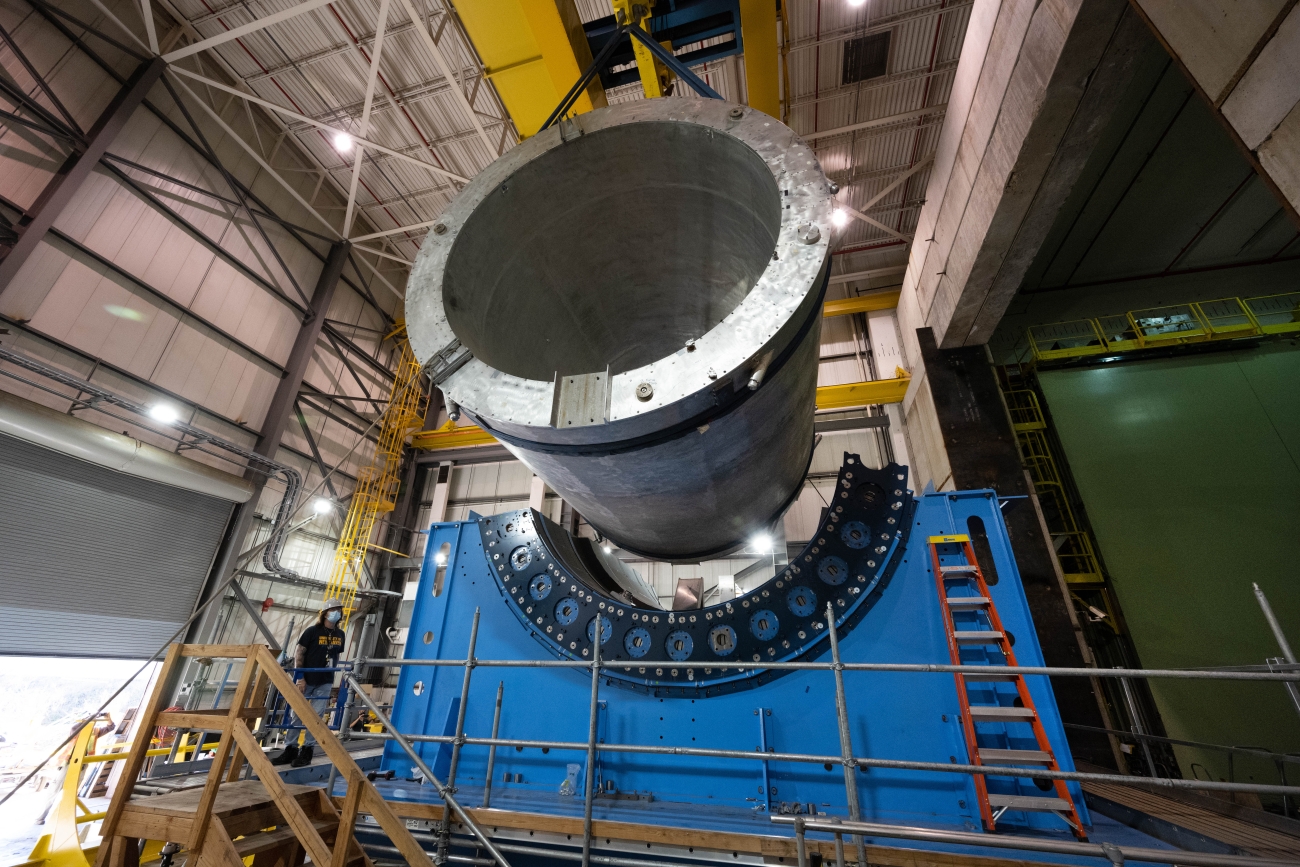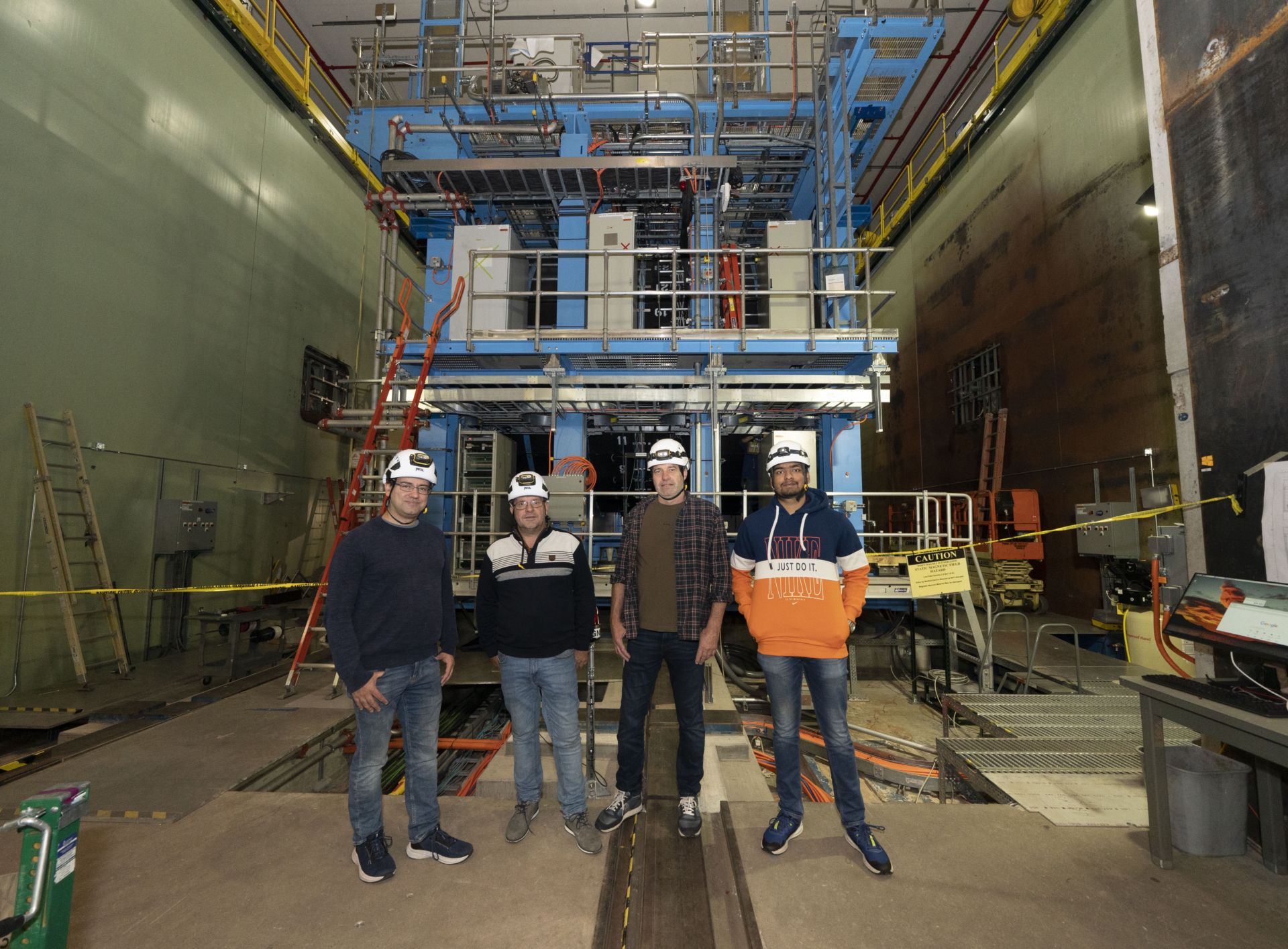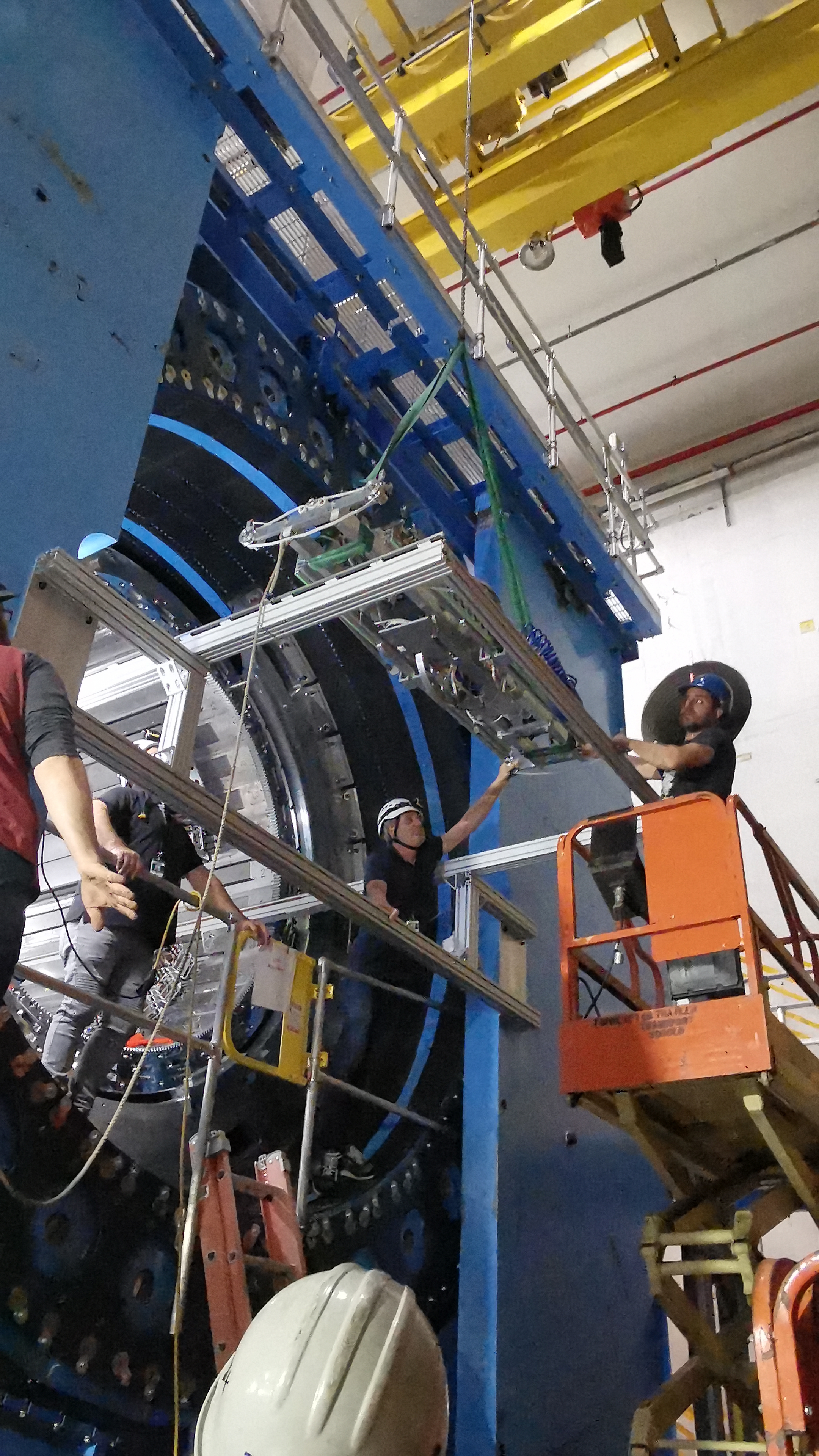CERN team maps the sPHENIX Solenoid at BNL

In November 2022 the magnet service team of the Detector Technology group performed the mapping of the superconducting solenoid in the sPHENIX experiment at BNL (US). The two-week long campaign was the culmination of preparations that started during the most difficult times of the Covid pandemic. The campaign was a success, and the results will be used to improve the physics performances of sPHENIX.

Figure 1: From left to right, CERN magnet mapping experts Nicola Pacifico, Francois Garnier, Raphael Dumps, Pritindra Bhowmick visited sPHENIX in November to map the field generated by the superconducting magnet at the heart of the sPHENIX detector.
A glorious comeback for the BABAR magnet
sPHENIX is a heavy ion experiment at RHIC, currently in the final stages of construction. It is a major upgrade of the PHENIX experiment, which has played a critical role in the understanding of dense partonic medium and quark gluon plasma. One major novelty in sPHENIX is the superconducting solenoid, replacing a previously installed permanent dipole. The solenoid, produced by Ansaldo (Italy), was originally at the core of the BABAR’s experiment at SLAC. With a 2.8 m bore and a central field of 1.5 T the magnet still has a say in High Energy Physics. The magnet was transported across the U.S. in 2015, tested at low-field in 2016 and high-field in 2018, and carefully installed at sPHENIX last year.
A meticulous preparation
The magnet service team within the Detector Technology group has a decades long experience in the mapping of experimental magnets. Among a few examples of magnets that the team mapped over the years are the ATLAS and ALICE solenoids, the LHCb dipole at CERN, as well as several magnets in other international laboratories, like Belle II at SuperKEKB (Japan) and STAR at BNL (US). Each magnet has its own specificities, which require the manufacturing of custom automatized mechanical gantries that sweep the volume with an array of magnetic field probes. The movement is actuated through pneumatic motors, as commonly employed DC or Stepper motors would not be able to operate in strong magnetic fields.
The magnetic field probes are custom built and combine 3 GaAs Hall sensing elements mounted in a cartesian configuration. The assembly of such devices is the result of years of R&D, aimed at maximizing the accuracy and stability of the probe. The calibration of the probes is performed at CERN in a dedicated 2.5 T dipole. The voltage-field characteristic of the probe is modeled employing a combination of Chebyshev polynomials and solid harmonics, to account for geometrical and physical non-linearities. This results in each probe being modeled with more than 200 parameters, in order to achieve an accuracy better than 1 mT.

Figure 2: The Hall probe card, with the three Hall Sensing elements mounted on a glass cube. The leads are wire wrapped instead of soldered in order to minimize mechanical stresses within the packaging.
For the sPHENIX mapping the magnet service team decided to employ a refitted version of the bench already employed for the mapping of the ATLAS experiment, taking advantage of the similarities in the dimensions of the two solenoids. The gantry was retrofitted with new pneumatic motors as well as new control electronics and probes.
The organization took place over months through regular video meetings with the BNL team. The timing was critical, as the mapping would need to happen in a very tight window in the busy assembly schedule of sPHENIX, right after the commissioning of the magnet controls and cryogenics and before the insertions of the EM calorimeter tiles.
The mapping gantry was commissioned in building 168 over the summer of 2022 and later disassembled and packaged in a 5 m container, with a total weight of 1.5T. The container was then air-freighted to the US at the beginning of October. The transfer took just 4 days, from the departure from the CERN site to its arrival at BNL.
The mapping
The mapping took place over the first two weeks of November 2022. The CERN team arrived on site and started the installation of the gantry, with the local help provided by the sPHENIX team. The installation and commissioning phase was followed by the closure of the magnet doors and the start of the mapping.

Figure 3: Installation of the mapper in the sPHENIX solenoid bore
Several maps were taken, with varying spatial resolution and magnet current values. Depending on the step size, one full map took between 12 hours and 26 hours to complete. The data acquisition and monitoring were fully automated, and allowed the magnet service team to rest at night while an alert system would warn them over SMS in case of anomalies.
The mapping was a success, and provided the sPHENIX community with valuable data. The data will be used to validate Opera simulations in order to improve particle identification within the tracking region (pixel and TPC detectors).
